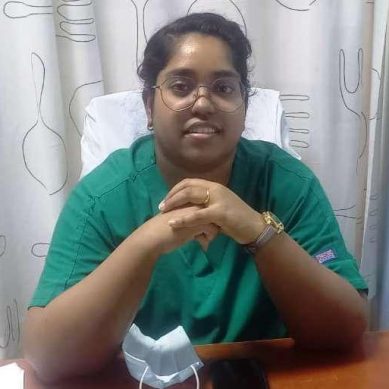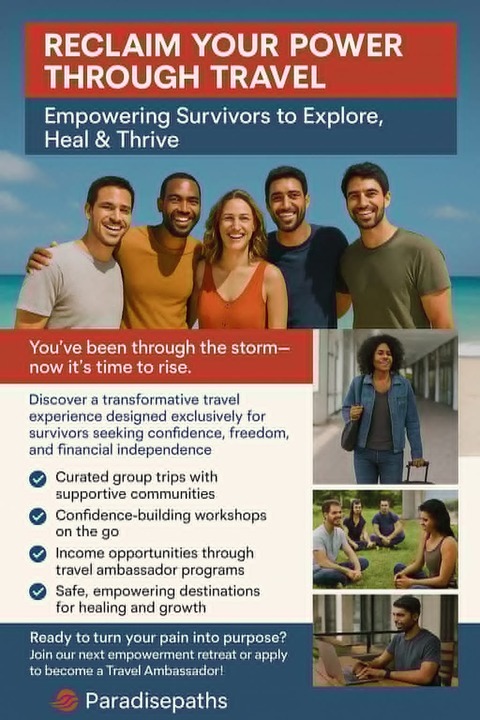
For Mary Achieng, a mother in Kisumu West, the word cerebral palsy once sounded like a life sentence. Her son Brian was born after a long and difficult labour. For months, she watched him struggle to sit, crawl, or grip toys the way other babies did. When the doctors finally confirmed the diagnosis, the news hit her like a storm.
“I cried for days,” she recalls. “I blamed myself, even though deep down I knew there was nothing I could have done differently.”
Mary’s story reflects the emotional toll behind every statistic. Her life now revolves around caring for Brian, who at seven years still cannot walk or speak clearly. Yet he radiates joy. He loves music, and when Mary sings, he smiles – a minor activity that speaks louder than words.
Every week, Mary travels across town to the Holistic Nurturing Health Hub, a community-based organisation that offers therapy and caregiver support for children with neurodevelopmental challenges. For families like hers, these visits are lifelines.
“They’ve helped Brian improve his movement,” she says, “but just as importantly, they’ve helped me find hope again,”
From an observer’s perspective, what stands out most is not the tragedy of Brian’s condition but his mother’s resolve. Her life is defined not by what her child cannot do but by what she believes he can still become.
In Kenya, as in many parts of the world, cerebral palsy is one of the most misunderstood childhood conditions. It does not spread through contact or infection, yet stigma and silence often surround families living with it.
Many of these families quietly navigate an exhausting balance between medical care, social rejection, and the daily hope that their children will be accepted for who they are.
At Kisumu Specialist Hospital, Sonia Shivuprah, a Resident Medical Officer, describes cerebral palsy (cerebral palsy) as “a neurological condition that affects muscle control, posture, balance and speech.”
She explains that it occurs when “there’s damage to a developing brain at a very young age often during birth or shortly after,”
Her words are calm but carry the weight of experience. Across Kenya, cases like this are not rare. Health data has shown that most cerebral palsy diagnoses are linked to complications during birth a time when access to quality gynaecological care can determine whether a baby leaves the delivery room healthy or injured.
“There are four main types of cerebral palsy,” Dr Sonia explains. “Spastic, athetoid, ataxic and mixed. Mixed cerebral palsy is the most common, often combining two or more forms of muscle impairment.”
Diagnosis, she says, can happen early as soon as a baby begins to miss key developmental milestones. “Sometimes parents notice stiffness, poor balance or delayed speech. That’s when medical attention becomes urgent.”
But clinical explanations tell only part of the story. The reality of living with cerebral palsy extends far beyond the hospital walls into homes, classrooms and communities, where understanding and inclusion are still evolving.
Cerebral palsy is defined in the medical field as a group of permanent movement and posture disorders caused by damage to a developing brain, most often before, during or shortly after birth.
Cerebral palsy is the most common physical disability that begins at childhood. It’s a lifelong condition because it is a permanent condition with no cure but symptoms can be managed with various therapies.
Symptoms range from uncoordinated movement, balance and posture to impacting communication, cognition and sometimes causing seizures. Another symptom is developmental delays especially children, meaning infants may be slow to reach milestones like rolling over, sitting or walking.
Babies born prematurely, with low birth weight and complications during birth or in the womb are at risk of getting cerebral palsy.
Globally, some 18 million people live with cerebral palsy. Of these, more than 8.1 million children under the age of five are estimated to have cerebral palsy, with over 98 per cent residing in low- and middle-income countries.
Situation on Kenya
In Kenya, although no clear data on cerebral palsy exists, it is estimated that three out of every 100 children have cerebral palsy.
When a baby is born, the world seems to pause, for every cry is a promise and very heartbeat a beginning. Yet, for some parents, that beginning unfolds in unexpected ways, sometimes with surprises that shake the mother and the father too, to the core. And life is never the same again for this family.
Dr Sonia points out that the resilience of parents or caregivers deserves more societal support. “Hospitals can diagnose and treat but caregivers need ongoing help physically, emotionally and socially,” she says. “That’s where community programmes make a real difference.”
Her point can never be closer to the truth. In many Kenyan communities, families that are raising children with cerebral palsy often face isolation. The lack of understanding reinforces the idea that disability is something to be hidden rather than supported. It also feeds superstitious thinking that the condition is caused by witchcraft or a curse.
Mary Achieng remembers hearing people call her child a curse. “At first, I stayed indoors,” she says quietly. “Then I realised he deserves to be seen.”
Her words carry quiet defiance the kind that fuels social change more powerfully than any campaign slogan. As a society, our discomfort with disability often stems from ignorance. We see difference before humanity, diagnosis before potential. Yet, behind every case of cerebral palsy is a child capable of living his or her life to the fullest and a caregiver who is determined to support them to fulfil these dreams.
Dr Sonia advocates for safer childbirth and early intervention. “Expectant women should attend antenatal clinics, have gynaecological reviews, and deliver in hospitals with skilled staff,” she advises.
She adds that proper monitoring during labour can prevent many complications. But even when cerebral palsy can’t be prevented, early therapy can help children live fulfilling lives. Her words are both medical advice and moral appeal at the same time: prevention matters but so does compassion.
For Mary, every day brings a new test of patience and faith. There are setbacks, exhaustion and moments of despair. But there are also small victories Brian lifting his arm during therapy, responding to her song, laughing unexpectedly.
“It’s not easy,” she admits, “but every smile reminds me to keep going.”
In Kisumu and beyond, mothers like Mary are redefining what it means to live with cerebral palsy. Their stories remind us that the condition is not just a diagnosis it is a mirror reflecting how society treats its most vulnerable.
And perhaps that is where change truly begins: not in hospitals or policy papers, but in hearts willing to see children like Brian not as broken, but as beautifully human.
- A Tell Media / KNA report / By Mabel Keya-Shikuku and Phanice Daizy







